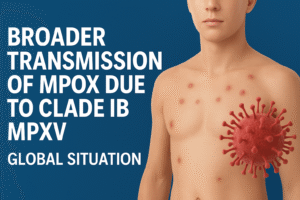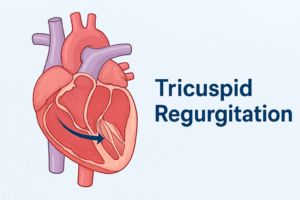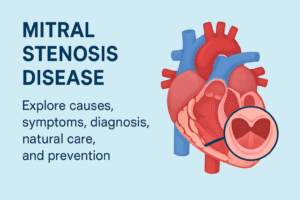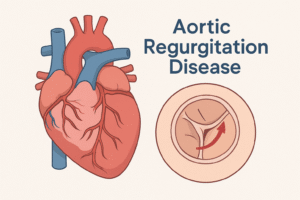What is Cardiac Arrest?
Cardiac arrest is a sudden stop in effective blood circulation caused when the heart abruptly stops beating or beats so ineffectively that it cannot pump blood to the brain and other vital organs. Unlike a heart attack (myocardial infarction), which is primarily a circulation problem, cardiac arrest is an electrical problem of the heart.
Mechanism of Cardiac Arrest
The heart’s pumping action is controlled by its electrical conduction system. In cardiac arrest, this system malfunctions, leading to:
- Ventricular fibrillation (VF): Chaotic, ineffective quivering of the ventricles
- Ventricular tachycardia (VT): Dangerously fast heart rhythm
- Asystole: Complete absence of electrical activity (“flatline”)
- Pulseless electrical activity (PEA): Organized electrical activity without a pulse
Causes of Cardiac Arrest
Cardiac arrest can result from heart-related or non-heart-related causes.
Heart-Related Causes (Most Common)
- Coronary artery disease (CAD): Blockage of heart arteries, often triggering a heart attack
- Heart attack (Myocardial infarction): Sudden blockage of blood to heart muscle
- Arrhythmias: Abnormal heart rhythms, especially VF or VT
- Cardiomyopathy: Weak or enlarged heart muscle
- Heart failure: Severe pumping dysfunction
- Heart valve disease: Narrowing or leakage affecting blood flow
- Congenital heart defects: Structural issues present from birth
- Myocarditis: Heart muscle inflammation due to infection or autoimmune causes
Non-Heart-Related Causes
- Severe blood loss or shock: From trauma or major bleeding
- Severe electrolyte imbalances: Low potassium, magnesium, or calcium
- Respiratory problems: Asthma attacks, choking, drowning, or suffocation
- Drug overdose or poisoning: Especially stimulants, sedatives, or certain medications
- Severe electric shock: Can disrupt heart rhythm
- Massive pulmonary embolism: Blood clot blocking lung circulation
- Extreme temperatures: Hypothermia or hyperthermia affecting heart function
Stages and Phases of Cardiac Arrest
Though cardiac arrest does not have stages like chronic illnesses, it can be described in four main phases:
1. Pre-Arrest Phase (Warning Signs)
This phase occurs minutes to hours before the arrest, often due to an underlying condition like a heart attack or arrhythmia. Warning signs may include chest pain, shortness of breath, palpitations, dizziness, or fainting. Immediate attention during this phase can prevent arrest.
2. Collapse / No Pulse (Recognition Phase)
Sudden loss of consciousness occurs due to cessation of effective heart pumping. Key signs include no pulse, abnormal or absent breathing, and unresponsiveness. Electrical activity may show VF, pulseless VT, asystole, or PEA.
3. Resuscitation Phase
Immediate CPR and defibrillation (if VF/VT) can restore circulation. The “Chain of Survival” includes:
- Early recognition and calling for help
- Early CPR
- Early defibrillation
- Advanced life support
4. Post-Resuscitation / Post–Cardiac Arrest Care
Focus is on stabilizing the patient, preventing brain injury, and treating the underlying cause. This involves ICU monitoring, temperature management, and heart support. Survival depends heavily on how quickly CPR and defibrillation were initiated.
Symptoms of Cardiac Arrest
Cardiac arrest often occurs suddenly, but warning signs may appear:
During an episode:
- Sudden collapse
- No pulse
- No or abnormal breathing
- Unresponsiveness
Possible warning signs before collapse:
- Chest pain or discomfort
- Shortness of breath
- Dizziness or lightheadedness
- Palpitations
- Weakness or fatigue
Immediate CPR and use of an Automated External Defibrillator (AED) can dramatically improve survival.
Diagnosis of Cardiac Arrest
Diagnosis is clinical and immediate:
- Unresponsiveness: No reaction to verbal or physical stimuli
- No normal breathing: Absence or gasping only
- No pulse: No detectable carotid or femoral pulse within 10 seconds
Confirmatory tools (if available quickly):
- ECG/Monitor: Detects VF, pulseless VT, asystole, or PEA
- Capnography: Very low or absent end-tidal CO₂ (<10 mmHg) supports diagnosis
After resuscitation: Blood tests, imaging, coronary angiography, and toxicology may identify underlying causes.
Treatment Without Medicine
Immediate life-saving actions focus on restoring circulation and breathing:
Immediate Actions
- Call emergency services
- Check responsiveness and breathing
- Start CPR if no normal breathing
CPR (Cardiopulmonary Resuscitation)
- Place the patient on a firm, flat surface
- Hand placement: center of the chest
- Compressions: 5 cm deep, 100–120 per minute
- Breaths (if trained): 2 breaths after 30 compressions
- If untrained: Hands-only CPR
Defibrillation (AED Use)
- Turn on AED and follow instructions
- Attach pads to bare chest
- Deliver shock if advised, then resume CPR
Continue until signs of life appear, EMS arrives, or you are unable to continue.
Prevention of Cardiac Arrest
Lifestyle Prevention
- Heart-healthy diet: fruits, vegetables, whole grains, nuts, lean proteins
- Regular exercise: 150 minutes/week moderate activity
- Maintain healthy weight
- Avoid smoking and limit alcohol
- Control blood pressure, cholesterol, and blood sugar
- Manage stress through meditation, breathing, or hobbies
Medical & Monitoring Prevention
- Regular cardiac check-ups
- Treat underlying heart conditions
- Correct electrolyte imbalances
- Consider Implantable Cardioverter Defibrillator (ICD) for high-risk patients
- Follow prescribed medications
Emergency Preparedness
- Learn CPR and AED use
- Ensure AED availability in public spaces
Risk Factors
Medical: CAD, previous heart attack, heart failure, arrhythmias, cardiomyopathy, congenital defects, history of cardiac arrest, valvular disease, long QT syndrome
Lifestyle & Environmental: Smoking, sedentary lifestyle, poor diet, excess alcohol, drug abuse, high stress
Other Contributing Factors: Hypertension, high cholesterol, diabetes, obesity, sleep apnea, electrolyte imbalances
Global and Regional Impact
- Global: ~1.8 million deaths annually, 15–20% of all deaths in high-income countries
- United States: ~356,000 out-of-hospital cases/year, 90% fatal, only ~10% survive to hospital discharge
- India: 500,000–700,000 deaths/year, a significant public health challenge
Cardiac arrest is a leading cause of death worldwide, and immediate intervention with CPR and AED can save lives.
FAQ
Q1: Is cardiac arrest the same as a heart attack?
A: No. Heart attack is a circulation problem; cardiac arrest is an electrical malfunction causing the heart to stop beating effectively.
Q2: Can cardiac arrest be prevented?
A: Yes. Maintaining heart-healthy habits, controlling risk factors, and regular medical check-ups reduce the risk.
Q3: What should I do if someone has cardiac arrest?
A: Call emergency services, start CPR immediately, and use an AED if available. Early intervention is critical.
Q4: Can cardiac arrest happen without warning?
A: Yes. While some may have warning signs like chest pain or palpitations, many cases occur suddenly and without prior symptoms.
Q5: How effective is CPR and AED in survival?
A: Early CPR and AED use can significantly improve survival rates, sometimes doubling or tripling the chances of recovery.






